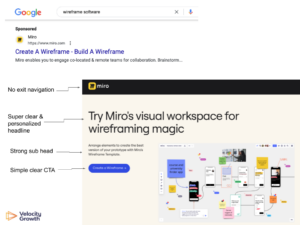Your product led growth probably won’t be the catalyst that jumpstarts your startup growth engine, and in fact may be leading you down the wrong path. Let me explain.
I’ve been talking to a ton of founders lately, and especially since the economic downturn started kicking in this year founders are confused on what to do about their marketing budgets. I’m seeing a lot of budget slashing, and a lot of changes being made rapidly to what would be the startup’s normal customer acquisition model.
For some this means that paid acquisition is turned off, and some companies are even giving up on channels that maybe working fairly well for them right now – like cold outreach, or their organic social plan, which is likely an unwise move.
Why is this happening? Because some of us in the product led growth space are feeding these founders wrong or mid-guided information about growth. Specifically, I’m seeing a lot of advice saying to spend more time focusing on product led growth, which these founders are interpreting as “build more features and your growth challenges will be solved.”
This thinking kills startups.

This study from CB Insights points out many of the reasons why startups fail. Not a lot of these reasons are directly related to the actual product.

This is an old one but a good one from Paul Graham…notice the themes above.

Finally, the stats from Startup Genome point directly to the fact that over building and scaling too quickly is a key risk in startup failure.
I had one conversation a couple weeks back with a startup that’s raised a good amount of capital and their growth was looking very, very good up until a few months ago. I asked the founder, “What happened when you started to flatline your growth? There’s just no new growth anymore.” And after looking at a whole bunch of different things (we looked at pricing, we looked at emails, we looked at conversion rates), what we realized was that when they stopped doing demo driven sales, the conversion rate between their leads and customer dropped.
And in fact, they’ve made less revenue off of the leads coming in, and have closed a smaller percentage of the leads that have come in via strictly product led channels. Why is this? This is actually very, very common. When you’re early stage, you may not have the perfect persona defined. And you may not have the perfect messaging with the right benefit statements that the user feels aligned with. And the product value that is needed to educate the buyer without talking to a human may just not be there yet. Now, you could make the argument that maybe this company should have just invested more in an informational educational onboarding sequence and just provide better onboarding through the product.
But the problem is they don’t have enough insight from the customer yet to know how that should even work. So they’re in this spot where they’re trying to be product led but they don’t have the messaging down yet to really influence the product strategy that’s supposed to be converting these users in the first place.
And so my recommendation here was to reverse this, to actually turn off the automation around letting people create accounts for free and put up a wall and actually have a human have a conversation with the lead, so that the education process can happen and that the lead can understand the complexities and nuances of this product that they’re potentially interested in buying.
Here’s the other part where product led growth could lead you astray: It’s when you have a product that is more geared towards a bigger decision that the stakeholder has to make, where there’s more context needed and more education needed for them to feel comfortable pulling out their credit card. And so in that situation you’ll likely want to build a free plan where you provide as much value under that free plan as possible, and then use the product for distribution to get additional users in. Maybe you feature gate your product led growth efforts to enable the product to grow itself. Counterintuitive but likely viable.
But there’s no shortcut here. Product led growth is not going to fix a messaging problem or an acquisition problem. And, in fact, it could be hiding issues that you could more quickly uncover by having somebody on your team (who is a human) talk to another human about during the sales process.
I wanted to use this example because I’m seeing this over and over and over again, where it seems like a lot of founders and marketers in the market are pulling back on the things that are working exactly at the time where they should be doubling down on their growth efforts.
And they think that the product and the feature set that the product brings because it supports some level of virality is going to solve their growth problems – and it’s just not true 99% of the time. And so just be mindful how you think about how you’re going to grow your startup. And if you’re exclusively thinking at a product led approach, be mindful of the trade off that happens when you start to no longer communicate one-on-one with a human on the other end that’s the buyer. If you miss that, you’re going to build the wrong thing, you’re going to have the wrong messaging. And then when you try to go turn on marketing again, you may not have learned the lessons on the messaging side that you’re going to need to actually run really successful acquisition.

Craig Zingerline is a 6 time founder who has helped dozens of companies scale their growth. Prior to Velocity Growth, Craig was the Chief Product Officer @ Sandboxx, Head of Growth at Upside Travel, CEO of Votion, Head of Growth at Red Tricycle, and VP at New Signature. In addition to in-house roles, Craig has advised and consulted with dozens of high growth startups (4 exits). He’s an award winning product strategist who has mentored hundreds of founders on growth, marketing, and product management.






